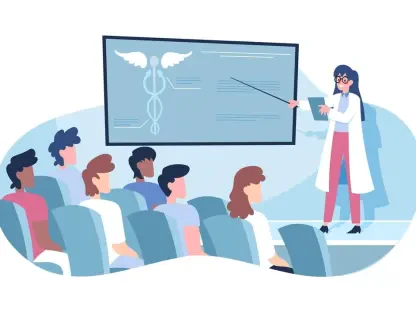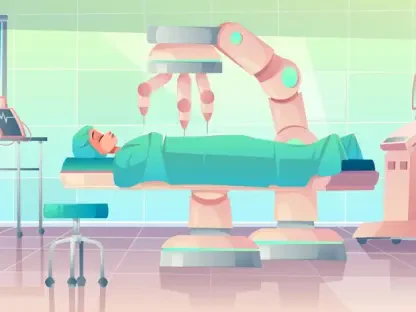Surrey, British Columbia, has experienced significant transformation over the past few years. Emerging as a crucial center for biotechnology and health technology, the city has strategically positioned itself as a burgeoning hub for health and life sciences. The concerted efforts of government and private sectors have fueled this growth, reshaping Surrey’s economic and technological landscape. The establishment of critical infrastructure and substantial investments have created a fertile ground for innovation, fostering an ecosystem where cutting-edge medical solutions can thrive and address global health challenges.
Significant Investments and Infrastructure Growth
The establishment of the Health and Technology District in Surrey’s downtown area symbolizes this transformation. Spanning two kilometers, this innovation center houses over 220 life science companies and healthcare institutions. The district has created a vibrant ecosystem fostering advancements in health and life sciences, supported by nearly $2 billion in government investment. Surrey’s commitment to enhancing its healthcare infrastructure is evident in its ambitious projects, including the construction of a new fully electric hospital and cancer center.
Scheduled to open by 2030, this state-of-the-art facility will offer 168 beds, emergency treatment spaces, and the BC Cancer Centre, which will handle approximately 100,000 cancer treatments annually. This development is set to significantly enhance acute care capacity in the region, addressing the increasing healthcare demands of a growing population. The government’s substantial financial backing underscores the priority placed on improving healthcare services in Surrey, further solidifying the city’s position as a hub for medical innovation.
Advancements in Medical Education
Surrey will soon host British Columbia’s second medical school at the SFU Surrey campus, opening in 2026. This initiative addresses the growing demand for primary care providers and family doctors in the province. With over $60 million in funding, the medical school will focus on patient-centered, community-level care, incorporating Indigenous knowledge systems into its curriculum. Simon Fraser University’s collaboration with the provincial government aims to deliver a curriculum that meets the diverse healthcare needs of the community, fostering a new generation of medical professionals equipped to handle future challenges.
The establishment of this medical school also reflects broader efforts to enhance the accessibility and quality of healthcare in the region. The first cohort of 48 students will begin their journey toward making a tangible impact on the healthcare landscape, paving the way for innovative approaches to medical education and community health. This strategic educational investment is designed to align with the evolving demands of healthcare, ensuring that Surrey continues to be at the forefront of training skilled healthcare professionals.
Innovation Leaders and Breakthroughs
HealthTech Connex (HTC), located in the Health and Technology District, exemplifies Surrey’s innovation prowess. Over a decade since its inception, HTC continues to lead advancements in brain health science through its subsidiaries: NeuroCatch Inc., The Centre for Neurology Studies, and the Surrey Neuroplasticity Clinic. The company’s concussion detection and recovery work recently earned a notable $1 million award from the Canadian government, highlighting its impact on healthcare innovation.
The innovative product NeuroCatch, which won a Gold Globee® award in the Medical Equipment category, further cements HTC’s contribution to health technology. Such achievements highlight Surrey’s role in fostering cutting-edge medical solutions and research. HTC’s ongoing contributions to brain health science and their recognized technological advancements demonstrate the capacity of Surrey’s Health and Technology District to support high-impact medical innovation, driving significant progress in healthcare delivery.
Educational Excellence and Workforce Development
With UBC’s significant investment in the Health and Technology District, valuable career training opportunities in high-demand fields, including physical therapy, occupational therapy, and midwifery, are now available. Supported by the provincial government’s StrongerBC: Future Ready Action Plan and a $24.9 million investment, UBC’s facility ensures a continuous pipeline of skilled professionals. This strategic educational framework is designed to respond to the growing healthcare needs of Surrey’s expanding population, preparing the workforce with the expertise required to sustain the region’s health and life sciences boom.
UBC’s facility in Surrey contributes to building a robust healthcare workforce, equipped to meet the diverse medical needs of the community. Through comprehensive and specialized training programs, UBC provides students with the skills necessary for effective healthcare provision, ensuring the region can sustain its burgeoning life sciences sector. This collaboration between higher education and government underscores a commitment to fostering talents that will drive the future of health technology innovation.
Economic Impact and Future Projections
The health and life sciences sector in Surrey is thriving, encompassing nearly 900 health-related businesses. These businesses range from traditional healthcare providers to innovative research institutions and private health companies. The Health and Technology District’s planned expansion will include over 1.5 million square feet of innovation space, expected to generate over 15,000 jobs and contribute $1.1 billion annually to the local economy. Surrey’s strategic investments highlight its role in driving economic growth, confirming its status as an emerging leader in health technology innovation.
These projected outcomes underscore Surrey’s significant role in driving economic growth and confirming its status as an emerging leader in health technology innovation. The city’s strategic focus on this sector aligns with global trends, integrating technology to enhance patient care and healthcare delivery. As Surrey continues to attract top talents and emerging companies, it positions itself as a model city for future urban and technological planning in the health sector.
Conclusion
Surrey, British Columbia, has undergone a significant transformation over the past few years. Now emerging as a key center for biotechnology and health technology, Surrey is positioning itself as a vital hub for health and life sciences. Both government and private sectors have collaborated extensively to drive this growth, reshaping the city’s economic and technological landscape. The establishment of critical infrastructure and significant investments have paved the way for innovation, creating an environment where advanced medical solutions can thrive. This fertile ecosystem is designed to address global health challenges and promote groundbreaking research. The city’s ambition is bolstered by its strategic initiatives to attract talent and foster collaboration. These efforts not only enhance Surrey’s local economy but also place it on the global map as a leader in health technology and life sciences. As Surrey continues to evolve, its role in pioneering advancements in health and biotechnology is becoming increasingly significant and influential.









